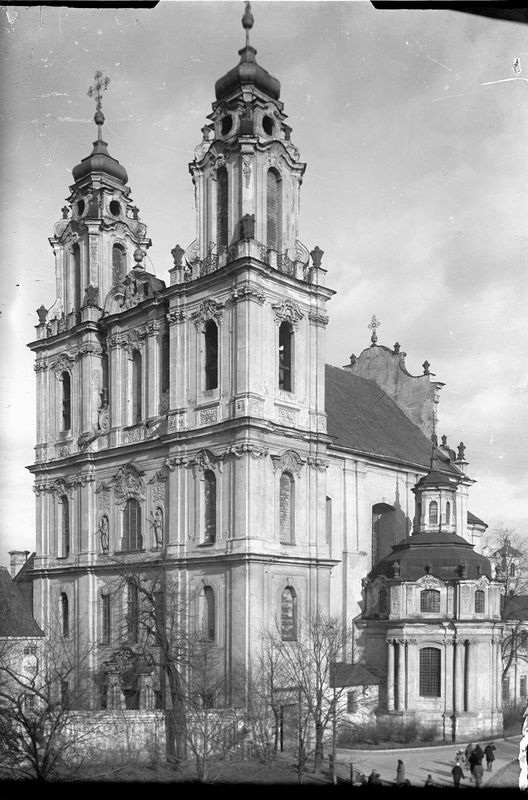Johann Christoph Glaubitz and the Late Baroque of Vilnius

The face of 18th century Vilnius was created by two prominent architects: Laurynas Gucevičius and Johann Christoph Glaubitz. In fact, they followed completely different courses. Whereas Gucevičius focused primarily on the immaculate architectural lines of classicism, Glaubitz created a city legend – Vilnius as a Baroque pearl.
The German Johann Christoph Glaubitz arrived in Vilnius at the invitation of the parish of the evangelical Lutherans and stayed for a long time. Following the great fires of Vilnius, Johann Christoph Glaubitz had sufficient space to create original structures. We have him to thank for the present-day external view of the Church of St. Johns’ and the Church of St. Catherine. It is thought that he also fixed the Cathedral Bell Tower, designed the interior of the Church of Holy Spirit and took care of the Basilian Monastery.
Some speculate that the architect lived in a two-storey building on Pranciškonų Street (Pranciškonų g. 6), which is called the House of Devil by some due to the preserved fragment of a mural from the 17th century, which depicts figures of dancing witches, a winged devil playing a pipe, a satyr and a steaming jug.
Death struck the architect at work during an inspection of a bricklayer’s work – he fell off a scaffold and died.
Vilnius in the 18th century – like a phoenix rising from the ashes
- The Great Fires
- The Great Plague, War and Famine
- Jean Emmanuel Gilibert – Lithuania’s father of botany
- Educational Commission
- Laurynas Gucevičius (Stuoka-Gucevičius)
- Mykolas Kleopas Oginskis
- Vilna Gaon or Elijah of Vilna (Eyliohu ben Shloyme-Zalmen)
- Reconstruction of the Town Hall
- Johann Christoph Glaubitz and the Late Baroque of Vilnius
- Uršulė Radvilienė and Vilnius’ First Theatre
